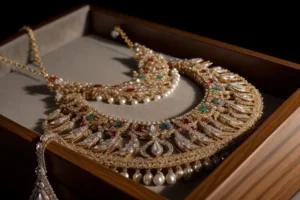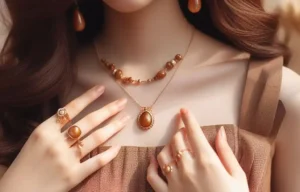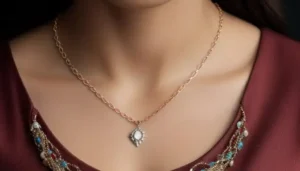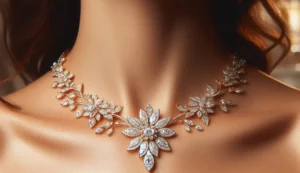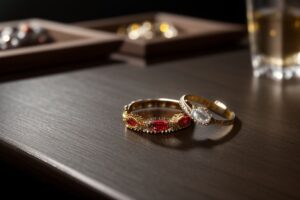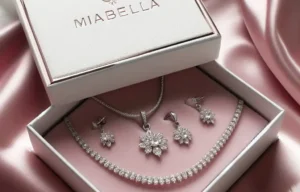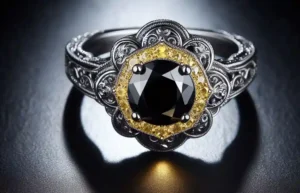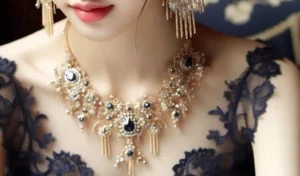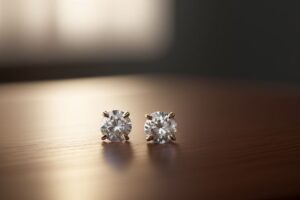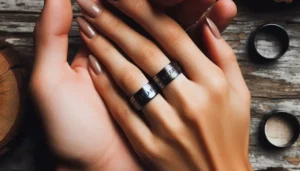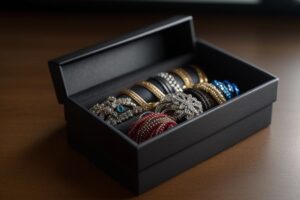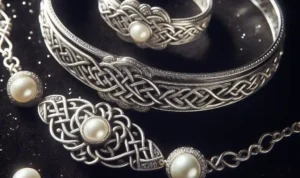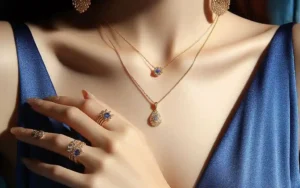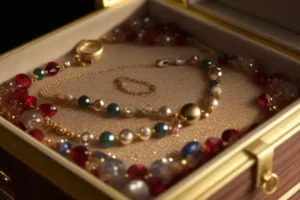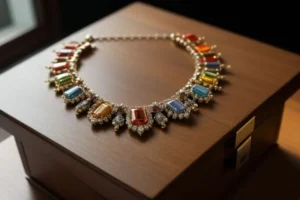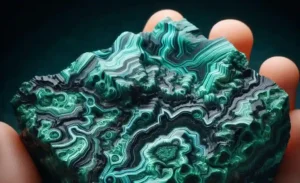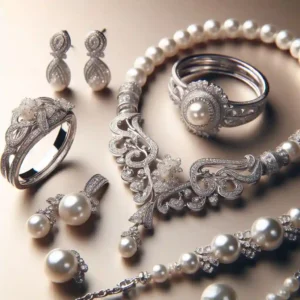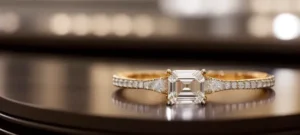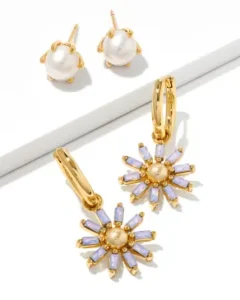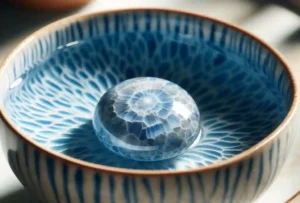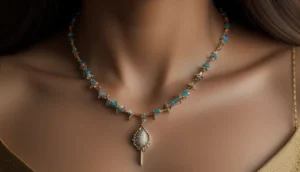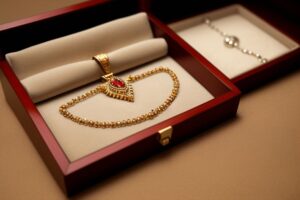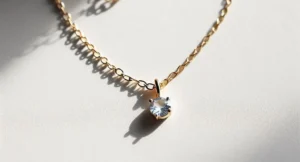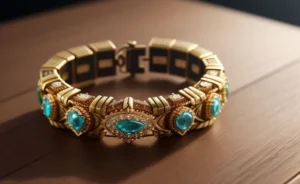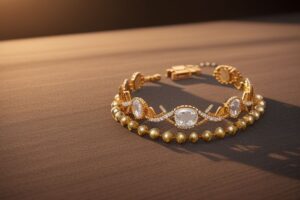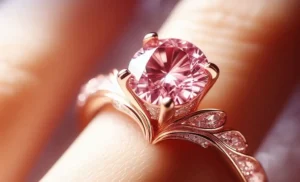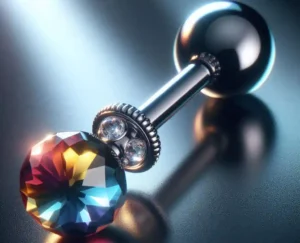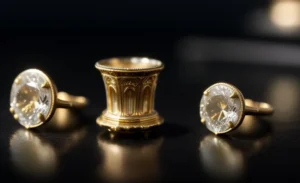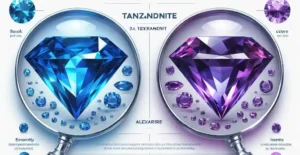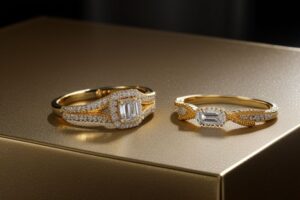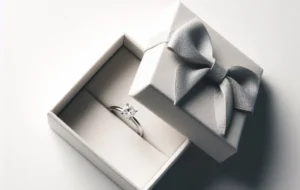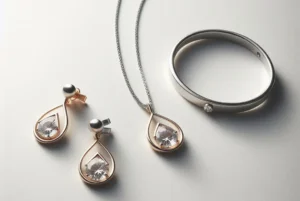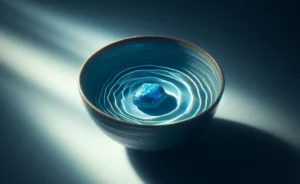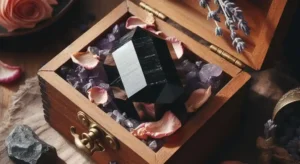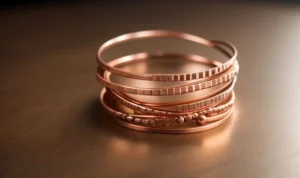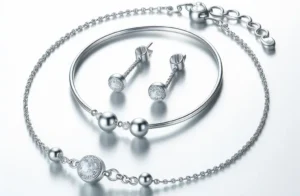How To Tell If Turquoise Is Real Or Fake? Turquoise, with its captivating hues of blue and green, has mesmerized civilizations for millennia, becoming a staple in jewelry collections worldwide. Its allure is undeniable, but so is the market flooded with fakes.
The quest for authentic turquoise is not only about aesthetic appreciation but also about investment in a piece of the Earth’s ancient history.
In this comprehensive guide, we unveil the secrets to distinguishing real turquoise from impostors, ensuring your collection remains genuine.
How To Tell If Turquoise Is Real Or Fake?
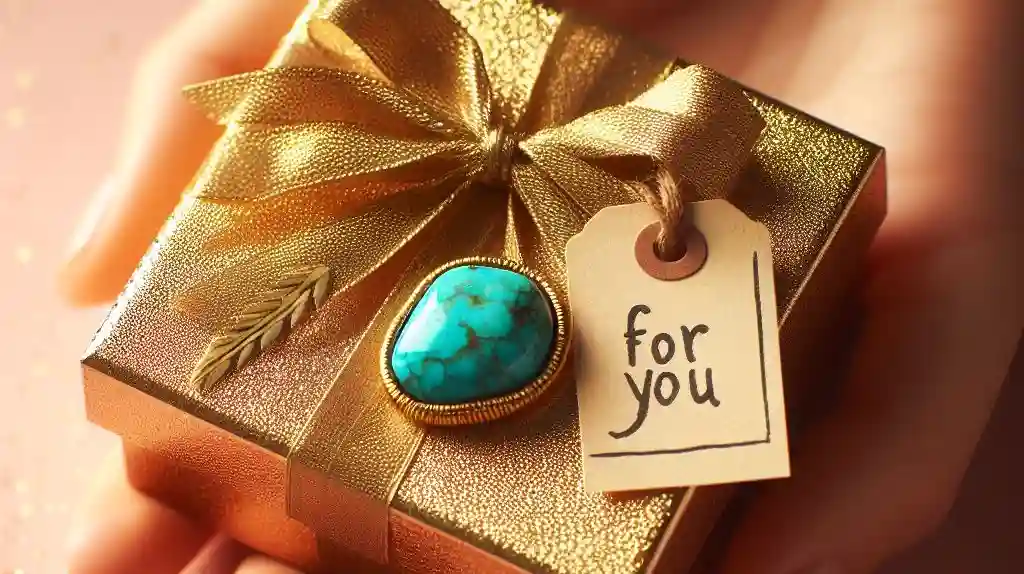
Identifying authentic turquoise requires a combination of observation and tests. Here are key strategies to determine if your turquoise is real or an imitation:
– Perform the Weight Test: Genuine turquoise has a distinct heft to it due to its mineral composition. Compare the suspect piece’s weight to a known authentic piece for noticeable differences.
– Conduct the Hot Needle Test (with caution): Apply a heated needle to a less visible part of the stone. Real turquoise won’t be affected, while fake ones may melt or emit a burning plastic smell.
– Examine Color and Matrix Patterns: Authentic turquoise displays a range of blues and greens with natural matrix patterns. Uniform colors and patterns often suggest artificial enhancement or fabrication.
– Use the Water Test: Genuine turquoise is porous and will absorb a drop of water or leave a dark spot, unlike synthetic materials which are generally non-porous.
– Employ the Magnification Test: Look for natural imperfections and color variations under magnification, which are absent in most counterfeits.
– Apply the Temperature Test: Real turquoise stays cool longer when held, unlike synthetic materials that quickly adapt to your hand’s temperature.
Each test contributes to a comprehensive evaluation, aiding in the distinction between real and fake turquoise.
Understanding Turquoise and Its Value
The rarity and allure of turquoise stem from its unique formation process, involving centuries of mineral deposits crystallizing under specific conditions. This slow natural genesis not only contributes to its scarcity but also to its diverse appearance, with no two stones exactly alike.
The valuation of turquoise is multifaceted, relying heavily on the stone’s origin, its natural matrix patterns, and the presence or absence of treatments to enhance its appearance. Mines in regions such as the Southwestern United States, Iran, and Mexico are renowned for producing turquoise of exceptional quality, with colors ranging from sky blue to apple green.
The matrix, a web of remnant host rock within the turquoise, adds character and is highly prized, particularly when it forms eye-catching patterns. Untreated, natural turquoise, free from any artificial enhancements, commands a premium in the market due to its authenticity and rarity.
As turquoise can undergo various treatments to improve its color or stability, discerning between untreated and treated stones becomes crucial in understanding its true value.
Acknowledging these factors is essential for collectors and enthusiasts aiming to invest in genuine turquoise, appreciating not just its beauty but its storied journey from the Earth to the jeweler’s showcase.
The Weight Test – Real vs. Fake Turquoise
One practical approach to discerning the authenticity of turquoise is through the weight test. This method leverages the inherent density of the mineral compared to the lighter feel of most counterfeit materials such as plastic or resin.
Authentic turquoise, being a naturally occurring mineral, possesses a certain heft that is palpably different when held in hand. This discrepancy in weight is a straightforward yet effective indicator of whether you’re handling real turquoise or an imitation.
To conduct this test effectively, it helps to have a baseline for comparison. If possible, compare the suspect piece with another piece of turquoise whose authenticity is known. This side-by-side comparison can make the differences in weight more apparent, providing a clearer insight into the piece’s legitimacy.
For those new to turquoise, familiarizing oneself with the weight of genuine pieces by handling them at reputable dealers can provide a point of reference for future evaluations.
This test, while helpful, is best used in conjunction with other methods to ensure accuracy in identifying genuine turquoise. It’s important to remember that while this test can be revealing, the final determination of a piece’s authenticity may require a multifaceted approach, considering other characteristics and tests discussed in this guide.
The Hot Needle Test – A Cautionary Approach
The hot needle test offers a more direct method of distinguishing genuine turquoise from its artificial counterparts, albeit with inherent risks. This procedure entails heating a needle to a high temperature and then carefully applying it to a less visible part of the stone.
True turquoise, composed of natural minerals, will show resilience against the heat, remaining unscathed by the needle’s touch. Conversely, synthetic materials such as plastic or resin, commonly used in creating counterfeit turquoise, will react quite differently.
These imitations may exhibit melting or deformation at the point of contact, or even release the distinctive odor of burning plastic, signaling their lack of authenticity.
Given the potential for damage, this test should be undertaken with the utmost caution. It’s imperative to choose an inconspicuous testing spot to minimize any impact on the stone’s appearance.
Ideally, the hot needle test is performed by professionals who possess the expertise to conduct it without harming the turquoise. For collectors and enthusiasts, the decision to use this method must be weighed carefully, considering the potential risks to the stone.
Opting for non-invasive identification techniques before resorting to this test is advisable, preserving the integrity and beauty of your turquoise piece.
Examining Color and Matrix Patterns
When evaluating turquoise, a key indicator of authenticity is its color range and matrix patterns. Genuine turquoise can span a vibrant spectrum of blues to greens, each piece uniquely characterized by its matrix – the remnants of the host rock.
These matrix lines can be black, brown, or yellowish, providing a stark or subtly contrasting backdrop to the stone’s primary color. It’s this natural interplay of color and pattern that hints at the stone’s authenticity.
However, discerning eyes must be wary of overly perfect appearances. Turquoise that showcases unnaturally uniform patterns or colors may signal a red flag for artificial treatments or manufacturing processes designed to mimic the natural aesthetic of turquoise.
Such perfection in pattern distribution or color uniformity is uncommon in natural stones, which inherently possess a degree of irregularity due to their formation process.
The matrix itself is not just a visual marker but a story of the turquoise’s journey from its geological beginnings. Each pattern tells a tale of the minerals and conditions that influenced the stone’s creation. When examining turquoise, consider how the matrix patterns weave through the stone, their alignment, and how they complement or contrast the base color.
Authentic turquoise will often have a more random, organic distribution of these matrix patterns, diverging significantly from the synthetic precision seen in counterfeit stones. This examination, while nuanced, is a crucial step in verifying the authenticity of turquoise and appreciating its natural beauty.
The Importance of Reputable Sellers and Certificates of Authenticity
Navigating the world of turquoise can be tricky, but partnering with reputable sellers is a significant first step toward guaranteeing authenticity. Experienced and esteemed dealers, who have built their reputation on the foundation of trust and quality, often have direct connections to ethical mines and are knowledgeable about every piece in their collection.
They can provide invaluable insights into a turquoise’s provenance, including the mine of origin and any treatments the stone may have undergone.
A certificate of authenticity is an additional layer of assurance for buyers. This document, provided by trustworthy sellers, verifies the genuine nature of the turquoise, detailing specifics such as weight, dimensions, origin, and any enhancements.
It serves as a tangible record of the stone’s journey from the mine to the market, offering peace of mind to collectors who seek to make informed decisions.
Engaging with sellers who prioritize transparency and education helps buyers navigate the complexities of turquoise purchasing. These vendors are usually eager to share knowledge, answer questions, and guide enthusiasts through the selection process.
They understand the significance of each purchase, whether it’s for personal enjoyment or as part of a larger collection, and strive to ensure satisfaction with every transaction. By emphasizing the importance of reputable sources and certificates, collectors can feel more secure in their pursuit of authentic, high-quality turquoise.
The Water Test – Identifying Porosity
The Water Test leverages the natural characteristic of turquoise as a porous stone, capable of absorbing moisture to a certain extent. This distinctive feature allows for a simple, yet insightful test. Place a single drop of water on the surface of the stone in question.
Observe its reaction attentively; if the water drop either gets absorbed or leaves a noticeable dark mark on the stone, this indicates the presence of genuine turquoise. This reaction underscores the stone’s authentic porosity, distinguishing it from many synthetic substitutes that are engineered to be non-porous and hence, would repel the water instead.
However, this test must be approached with care. While genuine turquoise does absorb water, excessive or repeated exposure to moisture can potentially harm the stone, altering its appearance or integrity.
Additionally, it’s important to note that some advanced imitations might be treated to mimic this porosity, displaying a similar absorption pattern as that of real turquoise.
Therefore, while the Water Test can provide valuable clues to the stone’s authenticity, it should ideally be employed as part of a broader strategy of examination, in conjunction with other tests and methods outlined in this guide, to confirm the true nature of the turquoise in question.
The Magnification Test – Spotting Imperfections
Utilizing a jeweler’s loupe or a high-quality magnifying glass is an insightful approach to uncovering the truth behind turquoise’s appearance. When viewed under magnification, authentic turquoise reveals a landscape of unique features that speak to its natural formation.
These characteristics include a range of color variations, often subtle, that synthetic processes struggle to replicate accurately. Unlike their genuine counterparts, fake turquoise stones may present with an unnatural uniformity in color and an absence of the distinctive, sporadic matrix patterns that are a hallmark of natural stones.
This method allows for the observation of minor imperfections and irregularities within the stone, such as pits or variations in the matrix, which are typical of natural turquoise. These irregularities—far from diminishing the stone’s value—enhance its beauty and authenticity, providing tangible proof of its natural origin.
In contrast, counterfeits might display a suspicious perfection, with matrix patterns that are too consistent or colors that are unnaturally even throughout.
Another aspect to scrutinize under magnification is the stone’s surface texture. Natural turquoise may exhibit a slightly uneven texture, a testament to its mineral composition and the forces that shaped it over millennia. On the other hand, imitations often have a smoother, more polished surface, lacking the tactile depth found in real turquoise.
Through careful examination with a jeweler’s loupe or magnifying glass, collectors and enthusiasts can gain invaluable insights into the true nature of the turquoise they hold, distinguishing authentic treasures from clever fabrications.
The Temperature Test – Feeling the Chill
One of the most intuitive yet often overlooked methods to discern real turquoise from its imitations is to assess its temperature. Authentic turquoise, given its mineral composition, naturally maintains a cooler temperature. This inherent coolness is a hallmark of genuine stones, which will remain noticeably cold for a longer period when held in your hand.
It’s a distinctive characteristic that synthetic materials simply cannot replicate accurately. Plastics or resins, commonly used in counterfeit turquoise, lack this mineral property and will quickly reach equilibrium with your body temperature upon contact.
This test doesn’t require any specialized tools or risk damaging the stone, making it an appealing option for anyone. However, its simplicity belies its effectiveness. The temperature test should ideally be combined with other verification methods to build a comprehensive understanding of the stone’s authenticity.
While feeling the chill of genuine turquoise provides a quick hint of its realness, further examination through methods detailed earlier, such as visual inspection for natural imperfections and weight comparison, solidifies your assessment.
This multifaceted approach ensures a more confident identification of true turquoise, allowing its timeless beauty and cool touch to be enjoyed with certainty.


